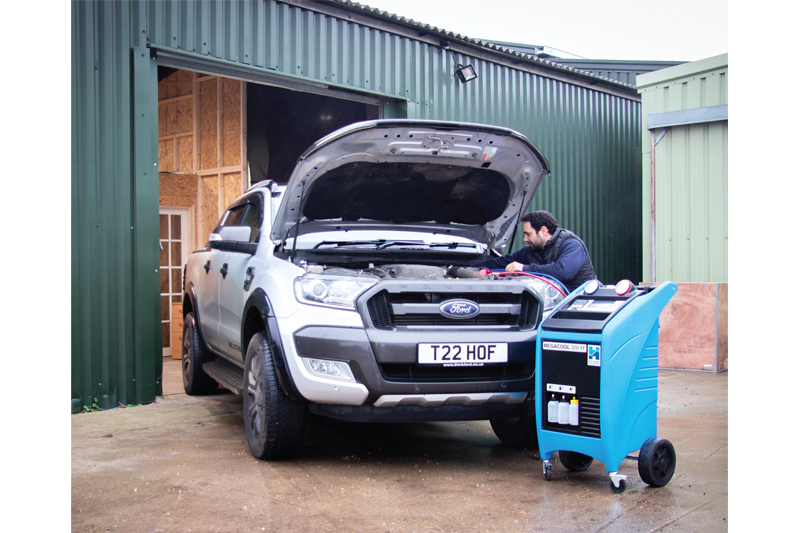
Sweltering summers might prompt a look at air conditioning systems but in reality they deserve an inspection at any time of year, says Mark Bristow, technical director, ISN Europe.
Most people associate air conditioning (AC) with the summer and focus on its ability to reduce the interior temperature of the cabin on sweltering days, but that’s not the only benefit of a properly maintained AC system.
Cool air is not the only thing generated by AC, it also produces relatively dry air, with most of the moisture removed; exactly what drivers need during the colder months as it demists the insides of the windows incredibly quickly – dry air absorbs the moisture straight off the inside of the glass.
Drivers won’t always think about having their AC serviced during the winter but for a workshop, it’s always worth checking the AC when a vehicle is in for a service, to avoid unnecessary down-time during warmer months.
Over time, the refrigerant in the AC system can seep out of the seals and moisture can build up inside the system too. Running the system on low levels of refrigerant doesn’t only mean you won’t get the desired temperature drop in the cabin. More importantly, for operators, the AC pump will be continually running, trying to generate the necessary pressure which will put extra strain on the components leading to premature replacement. It could also increase fuel consumption.
Moisture build-up inside the AC system can corrode the internals, degrade the performance and lead to failures; an AC system needs maintaining just like any other part of a vehicle.
There are two main types of refrigerant used in vehicles today; R134a and the newer R1234yf. R134a is extremely harmful to the environment and has a significant impact on global warming, hence the change to R1234yf. The newer gas began appearing around 2013 but uptake was sporadic so the older gas is still in a lot of vehicles today.
An AC service entails connecting the ‘recharge’ equipment to the vehicle to recover the existing refrigerant into the equipment’s internal tank. On its way to the tank, it is thoroughly cleaned using complex filters and separators to ensure all the impurities and moisture is taken out. Any oil recovered is disposed off into the AC machine’s catch tank.
Once the system is empty, the equipment generates a vacuum inside the refrigerant circuit, holding it in this vacuum state for around 20 minutes, so that any moisture in the system evaporates – the boiling point is reduced due to pressure change – and is drawn out of the system and expelled through the AC machine.
After that, the equipment carries out a leak test by closing the system and watching for any pressure drops. If any oil was recovered, it is replaced with new oil and vehicle’s AC circuit is filled with fresh refrigerant – most of what goes back into the vehicle is the original refrigerant, just thoroughly cleaned.
AC Checklist
Points to note:
- It’s always worth checking the drive belt for the AC pump, just in case it need replacing.
- Looking after your refrigerant is key to cost control. When you fill the equipment with new refrigerant, make sure you note how much has gone in (and when) and ensure the virgin gas is returned to a secure area.
- AC refrigerant is expensive. Remember to keep an eye on the amount of refrigerant being used to highlight any issues with working practices that may be costing you refrigerant.
- Don’t attempt to fill a system that has a leak, not only is it illegal to knowingly release refrigerant into the atmosphere, it’s also expensive. If you see the refrigerant leaking out, you will have lost a considerable amount before you manage to recover what’s left in the system.









